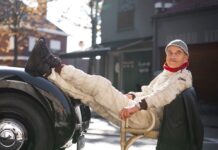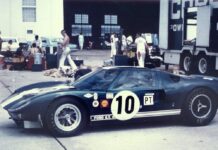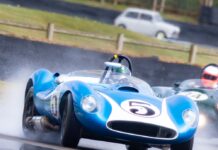A good way to start is with Bianco Cervino, the Matterhorn White of the blank slate.
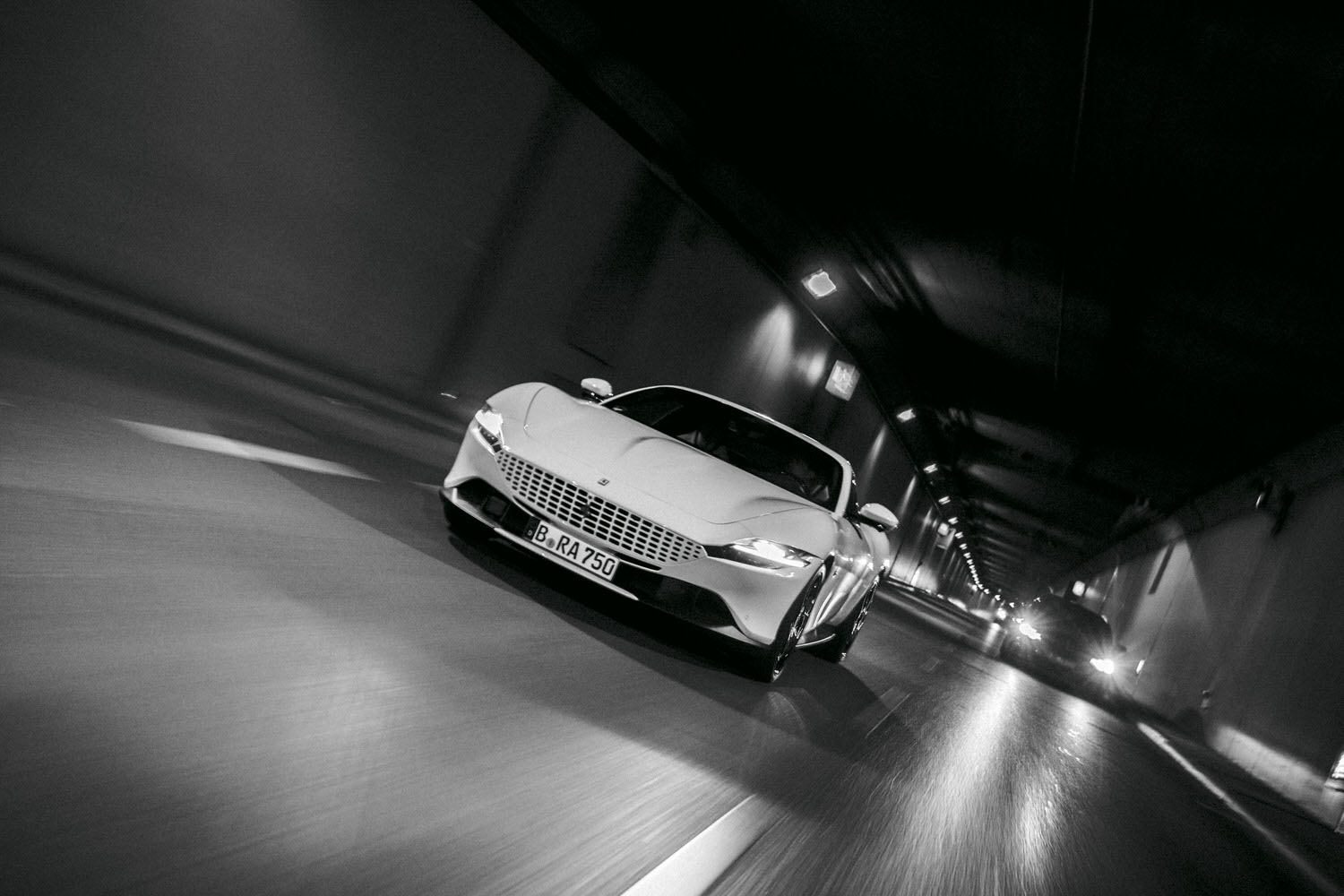
The car is called Roma, the city is Berlin. That’s basically all you need to know, because the car is white and fleeting, and the city, well, hopefully no longer as it appeared to the traveling gourmet and journalist Wolfram Siebeck, who imagined Berlin as “one huge construction site”. So let’s focus on the contrast, on the magic of opposites that we hope to experience as an alternative to the everyday routine.
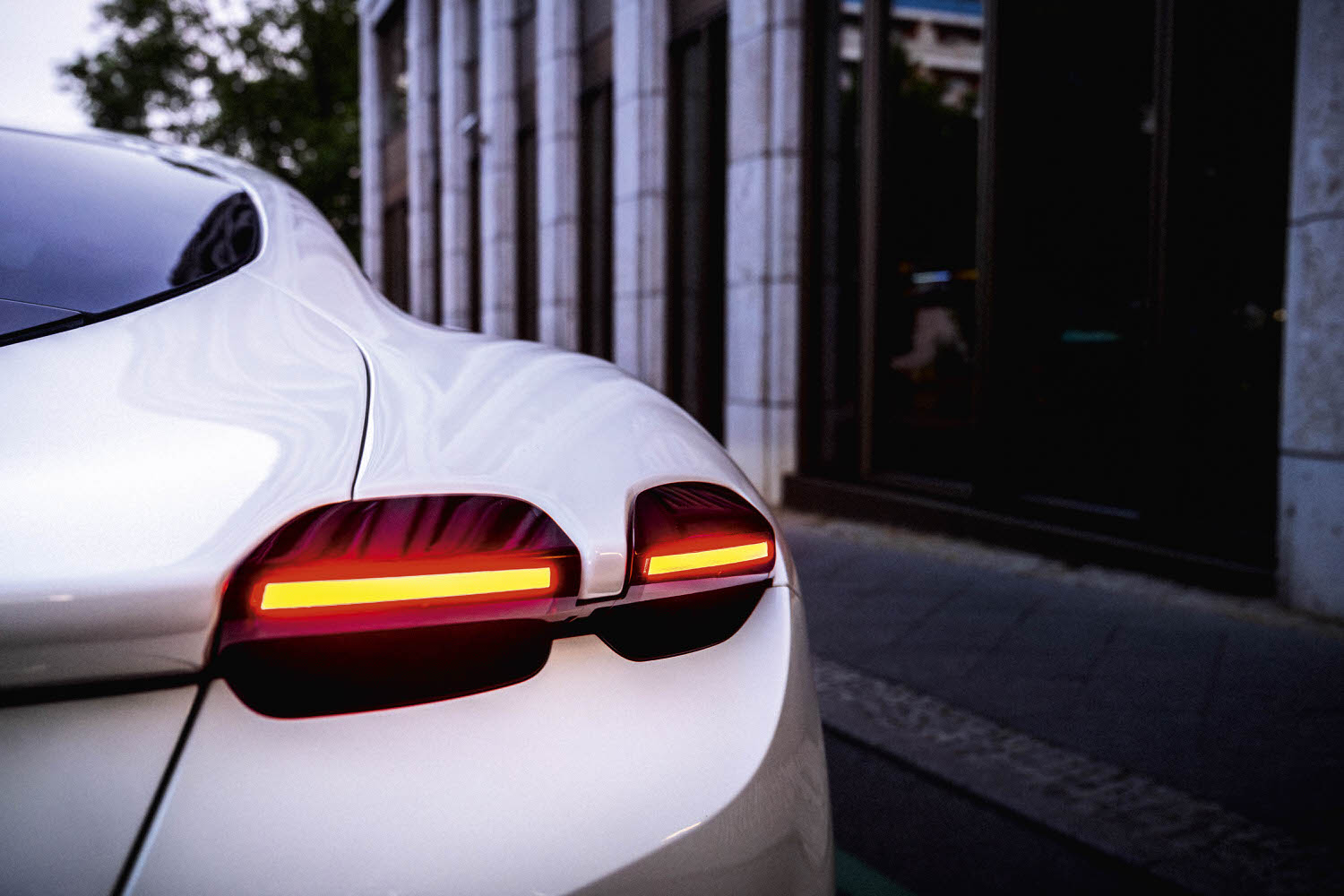
Myth, legend, emotions, these are such unbearably hackneyed terms, largely misused by marketing departments. The wonderful thing about a Ferrari is that as soon as it is actually standing there in front of you, it immediately begins to cultivate its own myth. Here it stands and cannot do otherwise – a gift to the world. Just looking at the car is usually enough. Then it delivers the proof, the moment you start the engine (it doesn’t even have to be the twelve–cylinder), composing a densely orchestrated -performance onto your nerves like notes on a sheet of music. And you -haven’t even driven a single meter yet.
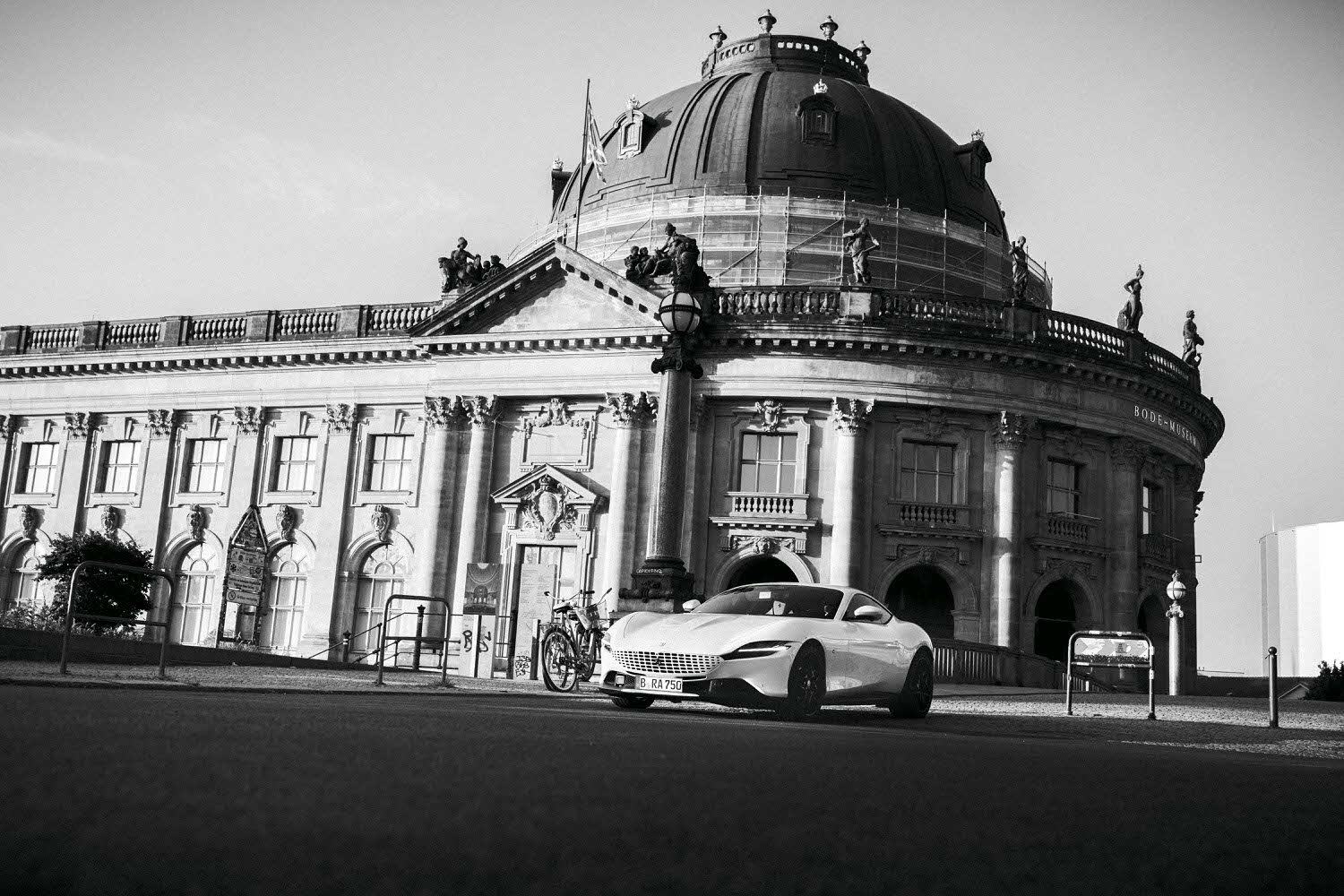
Few other brands have mastered the fine line between tradition and technological avant-garde, between dream and mundane reality, the way Ferrari has. And they make a lot of money doing it, including souvenirs, backpacks and Michael Schumacher bedside lamps. It wasn’t always like this: Enzo Ferrari once had to sell half of his company to Fiat to enable the production of the 206 GT and Dino 246 GT (which then also provided the financial breakthrough he needed). That was in 1969. By that time, Enzo already had his most harrowing experience behind him: the death of his son Alfredo (“Dino”) of kidney failure in 1956. It is said that he never really got over the loss. “There can never be true love between a man and a woman, because sexuality gets in the way,” Enzo Ferrari once wrote. “True love only exists between a father and a son.”
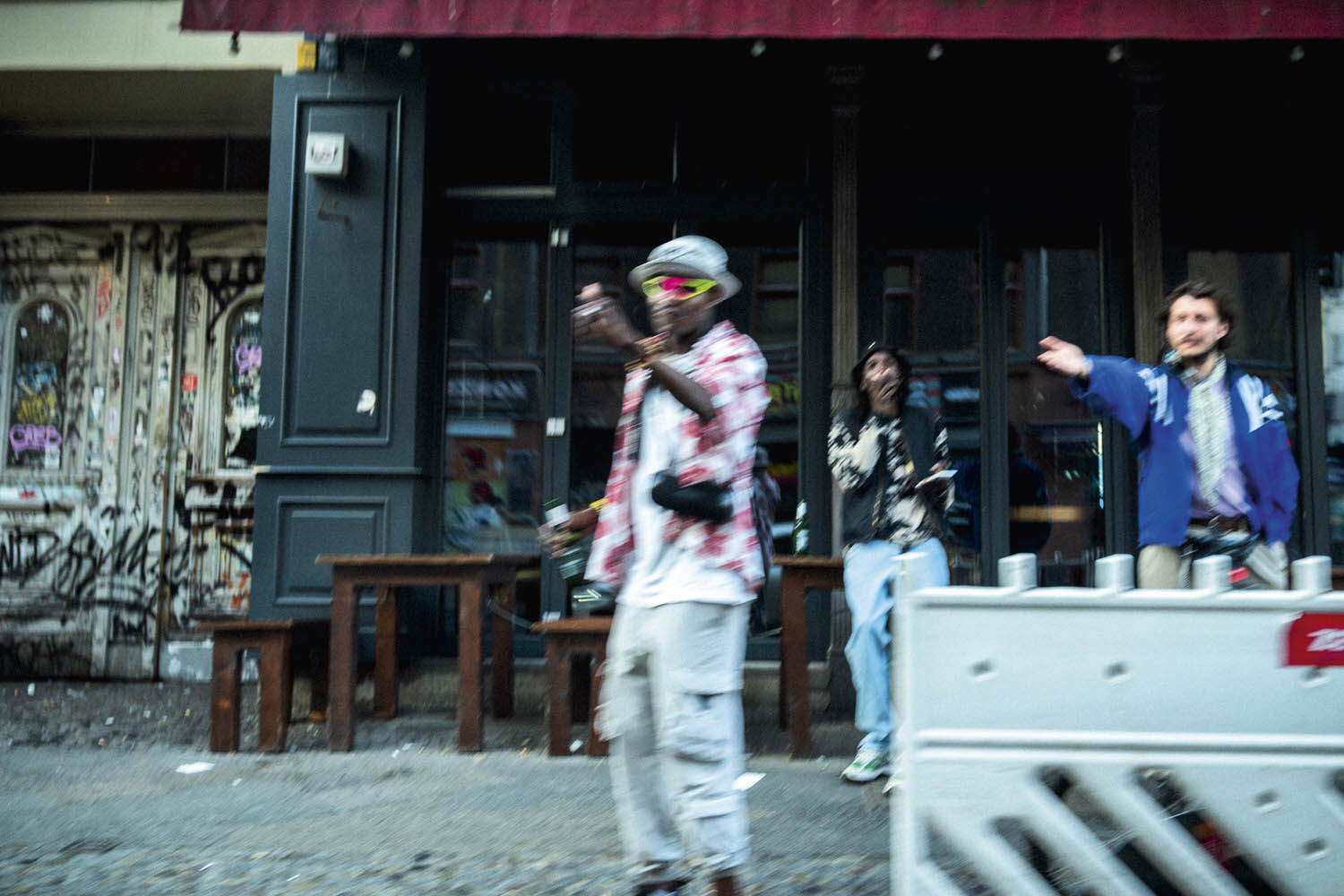
His paternal relationship with Austrian racing driver Niki Lauda was much talked about as well – as was his deep anger at Lauda’s “betrayal” when he left Ferrari for Brabham after becoming world champion with Ferrari twice. Once, before a press appointment with Ferrari’s “crown prince” Luca Cordero di Montezemolo in Maranello, I was invited to a waiting room where I was pleased to discover a finely framed -photograph on the wall – a black-and-white photo of Niki Lauda as a young man. Only on closer inspection did I realize that it was a portrait of Dino. What a striking resemblance!
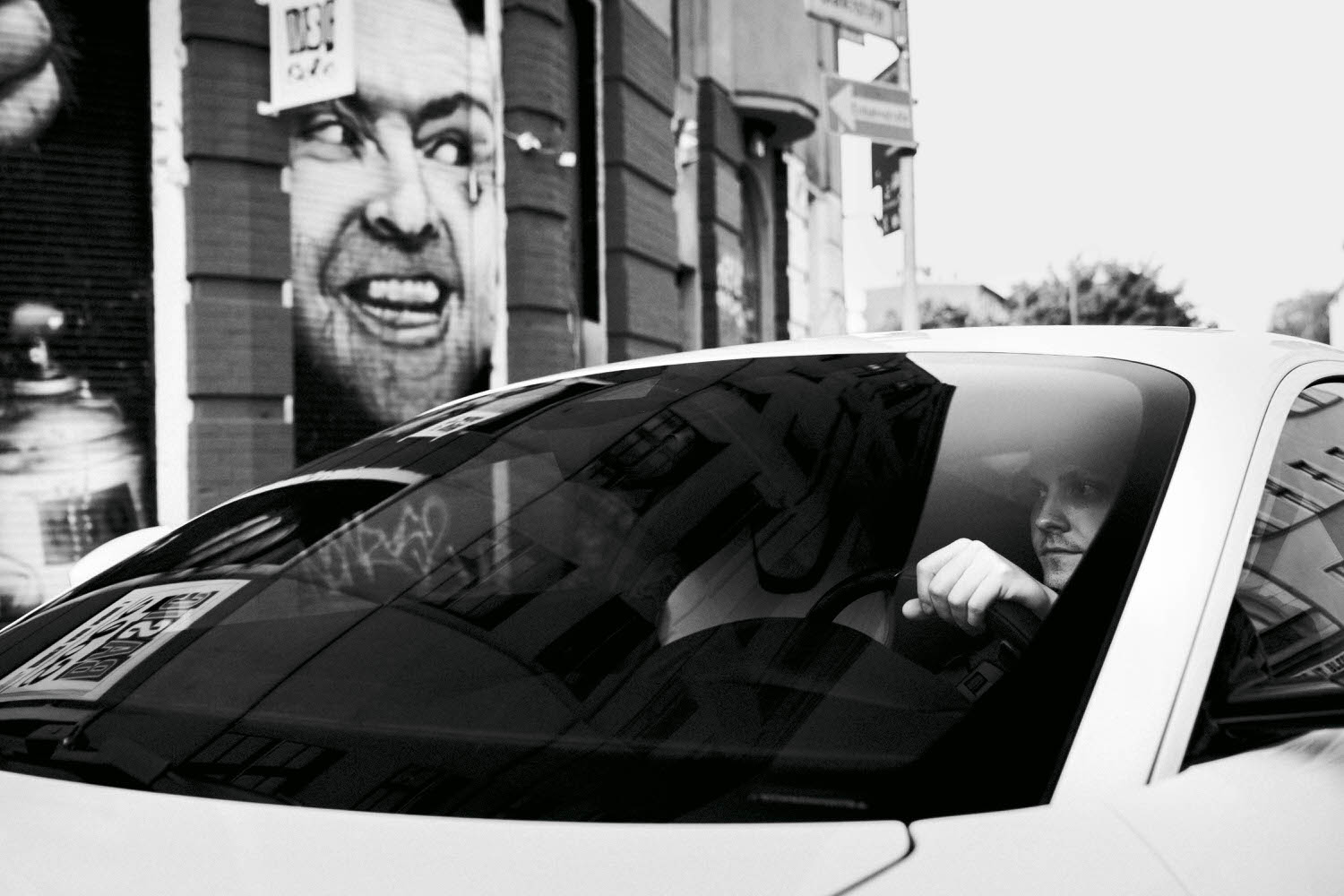
Enzo Ferrari practically grew up with the evolution of the internal combustion engine, and he himself worked to improve the engines with what he had learned from his father, who ran a workshop fabricating metal parts, and had acquired on his own. His first achievements were with his own race car, which eventually led to his being hired as a works driver by Alfa Romeo. He brought home a series of respectable victories and was a first-class driver, but he also proved to be an organizational talent, putting together a racing team, Scuderia Ferrari, as part of Alfa Romeo’s racing division. He then retired as an active driver to become deputy sporting director.
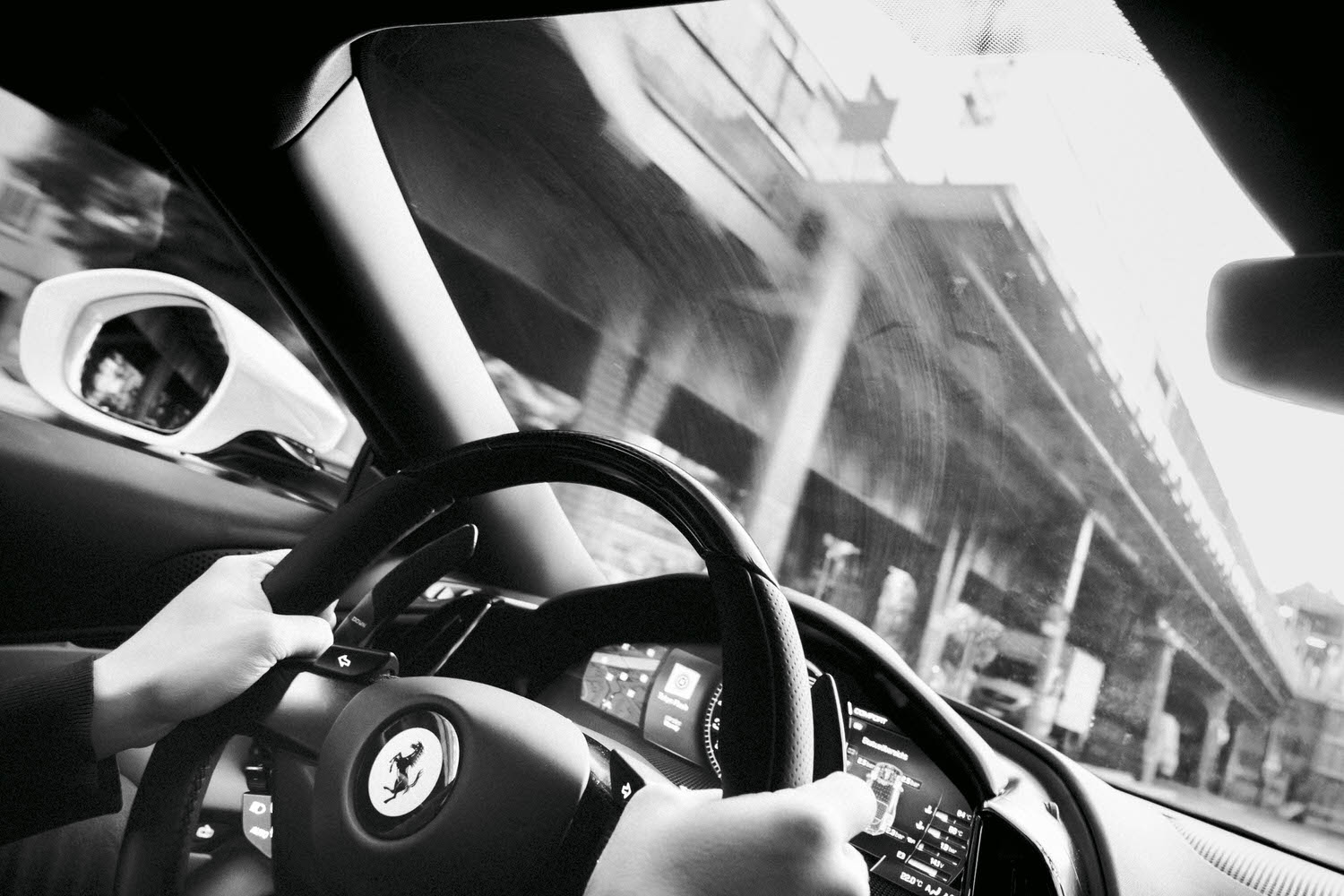
In 1939 Ferrari, bound by certain constraints, left Alfa Romeo with his Scuderia to settle in nearby Maranello. The first Ferrari car was built here soon thereafter: the 125 S, a monoposto powered by a twelve-cylinder, 1.5-liter, 90 hp engine. The 1,500 cc powerhouse, designed and built by Alfa engineer -Gioacchino Colombo, set the direction for future engines at Ferrari: high-revving twelve-cylinder designs with combustion chambers as small as mocha cups, finely chiseled technology on the edge of madness. When the Colombo engine failed to evolve further (it would have needed a turbocharger for Grand Prix racing, but this never worked properly), the Commendatore, in typical Ferrari fashion, brought in a more exacting competitor: Gino Lampredi, who introduced the “big” V12. Two engine geniuses in the house, with a series production of just thirty-three units per year.
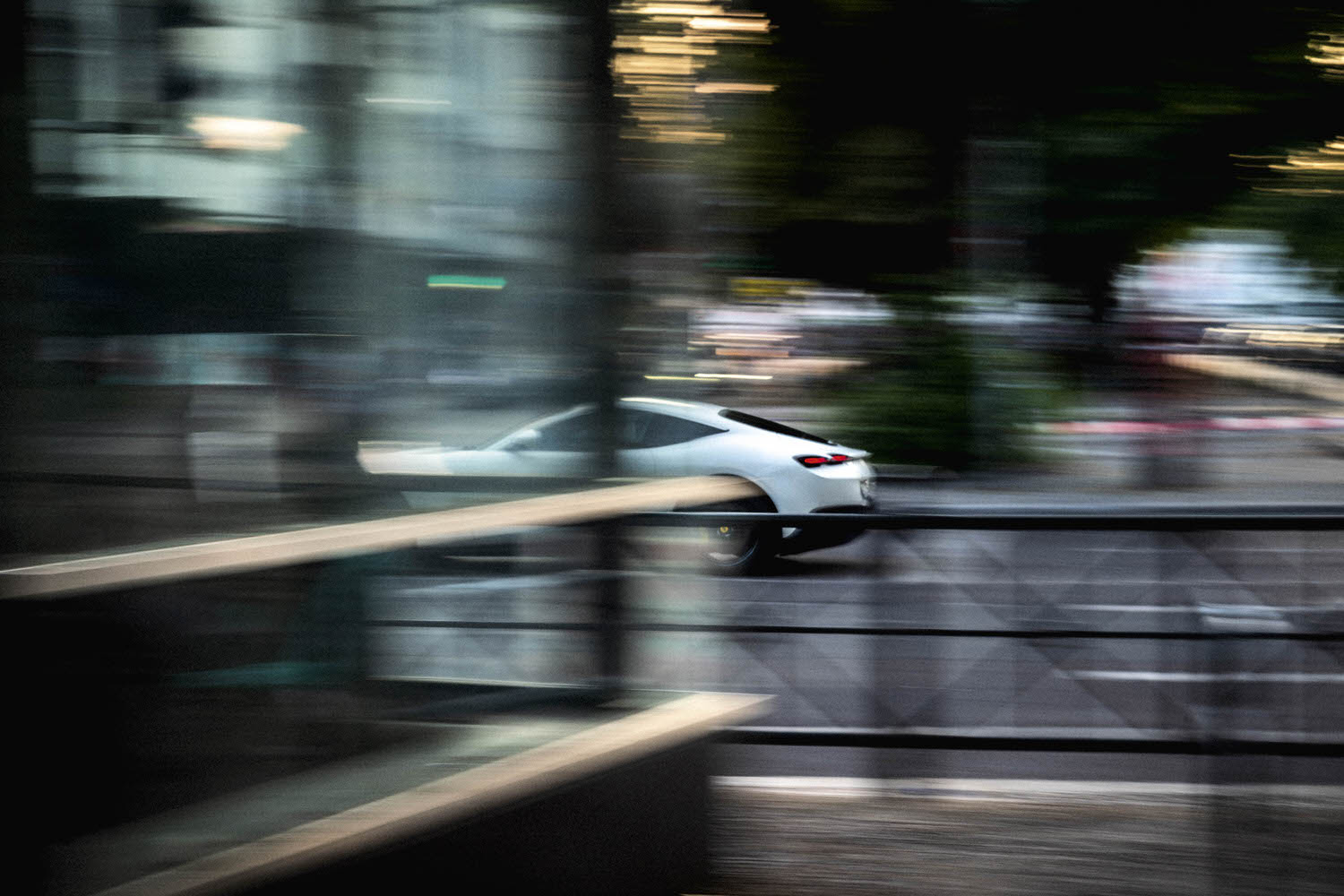
Ferrari won at Le Mans for the first time in 1949 (and went on to win six times in a row from 1960 to 1965, the last time thanks to Jochen Rindt in a 250 LM).
In 1952, in only the second year of -Formula 1, Ferrari won its first world championship, with Ascari, Farina and Taruffi taking the first three places. Ferrari grew accustomed to dominance early on – but then had several years in which it failed to achieve the same level of success. In the early 1970s the team even skipped some Grand Prix races for financial reasons because Arturo Merzario was only good for seventh place at best. And then Niki Lauda came along. He finished his debut race in Buenos Aires in second place and went on to win the fourth race that season (Jarama). The rest is history. The Gerhard Berger era followed, with five F1 victories, half of his total. The rest was pure Schumacher (seventy-two victories for Ferrari, six world championships en suite). Enzo’s death in 1988 triggered a full-on Ferrari hype, with collector’s items reaching astronomical prices. A GTO was sold for the equivalent of €3.6 million – and that wasn’t even Niki Lauda’s personal car, which, in a moment of weakness, he had sold at a painfully low price, around €2.2 million too cheap.
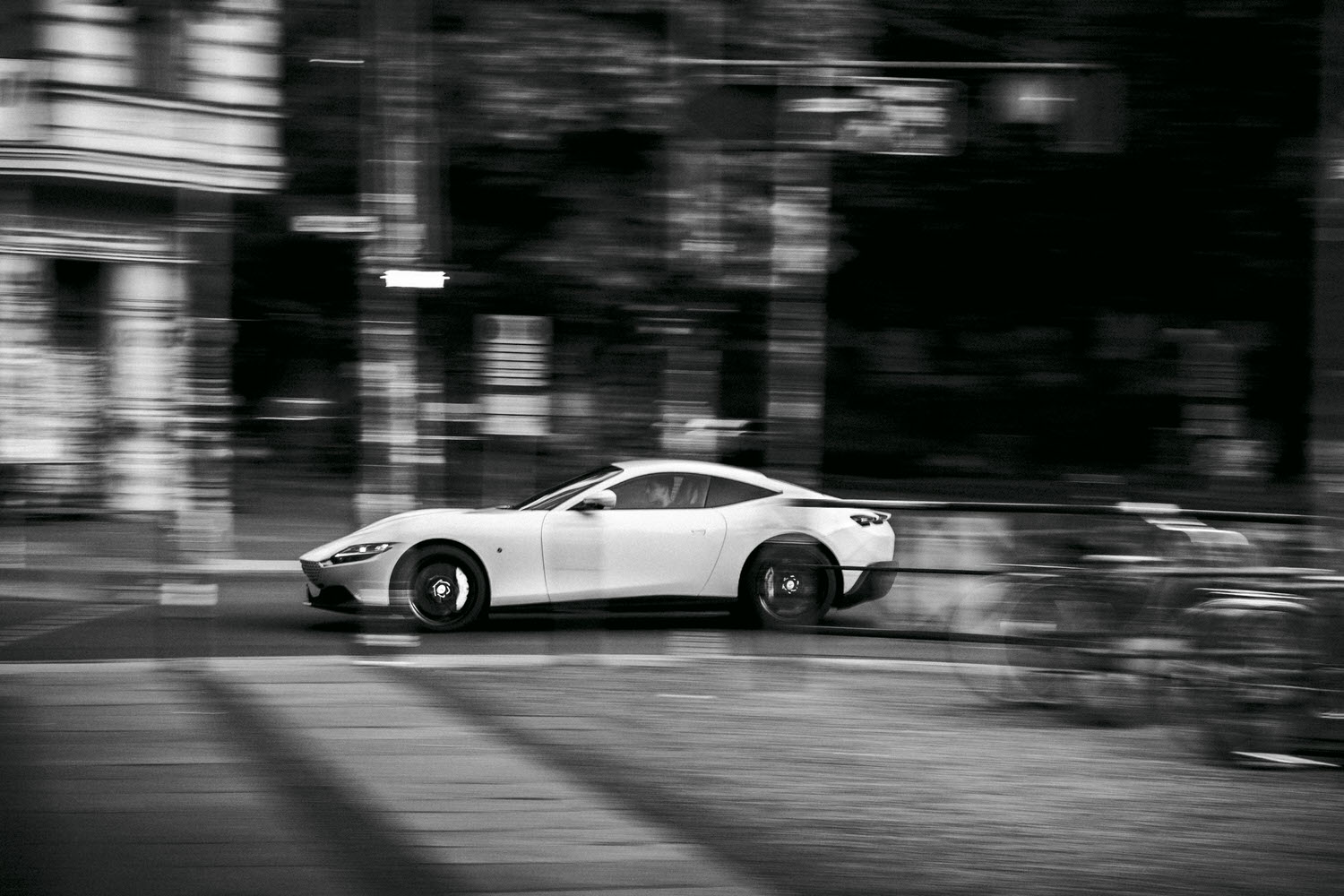
My favorite Ferrari moment of all time was at a walking pace, of all things. That was in 1984. I had just visited the Villa Tugendhat in Brno and was driving a BB 512, the last of a dying breed of twelve-cylinder boxer engines, over the cobblestone streets of the Old Town. A gaunt old man sitting at a bus stop rose to his feet in front of the car, bowed perfectly, tipped his hat and sat down again with such a noble kind of respect that it drove home a realization about the special nature of a Ferrari. But we must take care not to fall into the trap of seeing Ferrari entirely as myth and legend. Their engineers are among the most -prolific patent applicants in the auto-motive industry, coming up with the most incredible ideas: an inverted V8 engine for hydrogen hybrid powertrains, a seating position astride the car with motorcycle handlebars where the steering wheel would otherwise be – and then there’s the Ferrari with special nozzles, called gas thrusters, at specific locations to boost performance and increase grip.
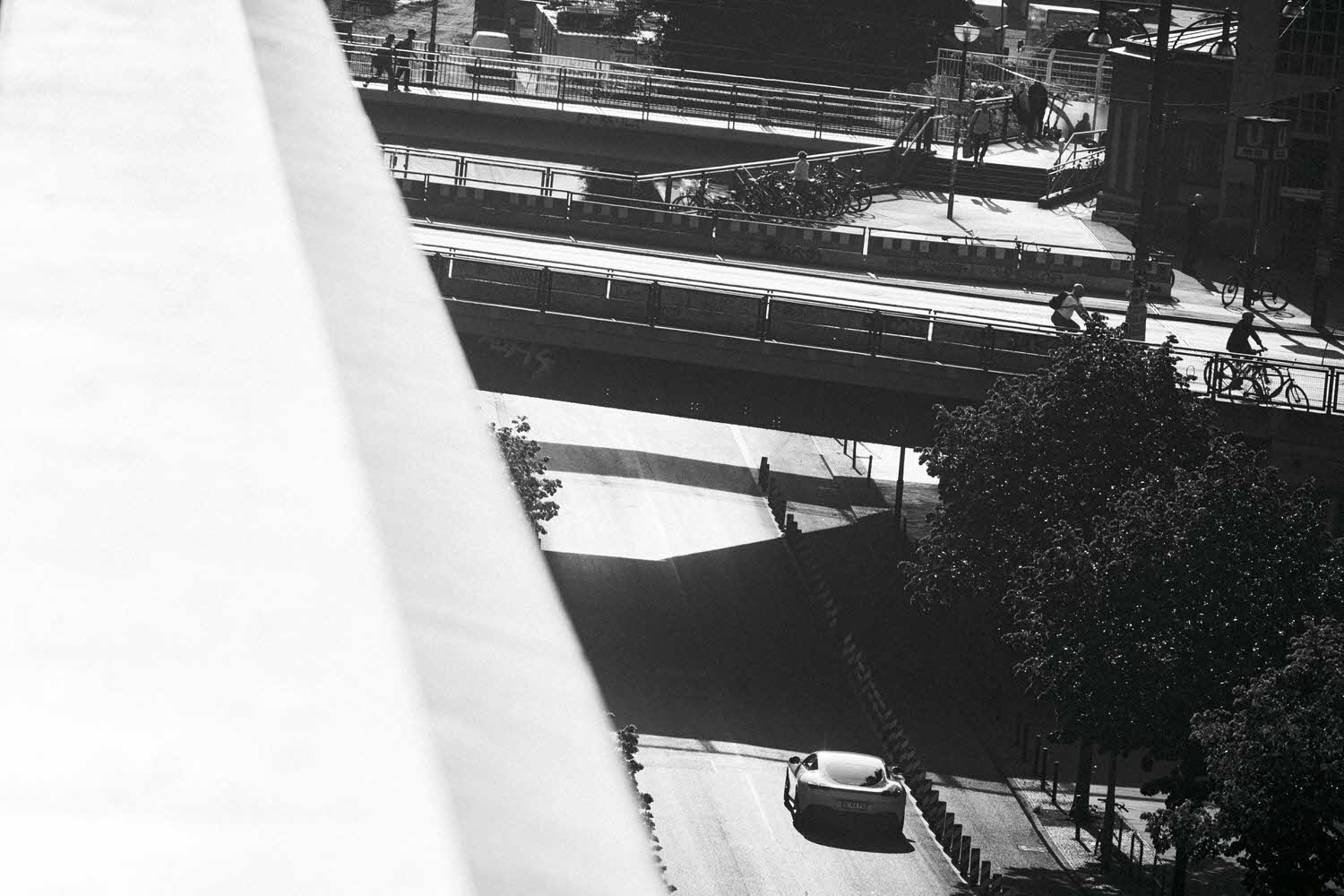
By contrast, the white Ferrari Roma is a self-contained benchmark in the urban fabric. Berlin seems to come to a halt to offer the Gran Turismo the space it demands. It’s as if the city were bending over backwards to accommodate the car, which would be a complete reinter-pretation of the touring idea with which Ferrari had originally caused such a sensation in the history of road-going cars. The Roma embodies the timeless charisma that makes icons. Like a great song, it seems to have always been there, a manifestation of aggressive elegance, underpinned by 612 horses of power, classically delivered via an eight-speed dual-clutch transmission, driveshaft and differential to the rear wheels by a V8 twin turbo pushed well back over the front axle. Classic hood, classic trunk.
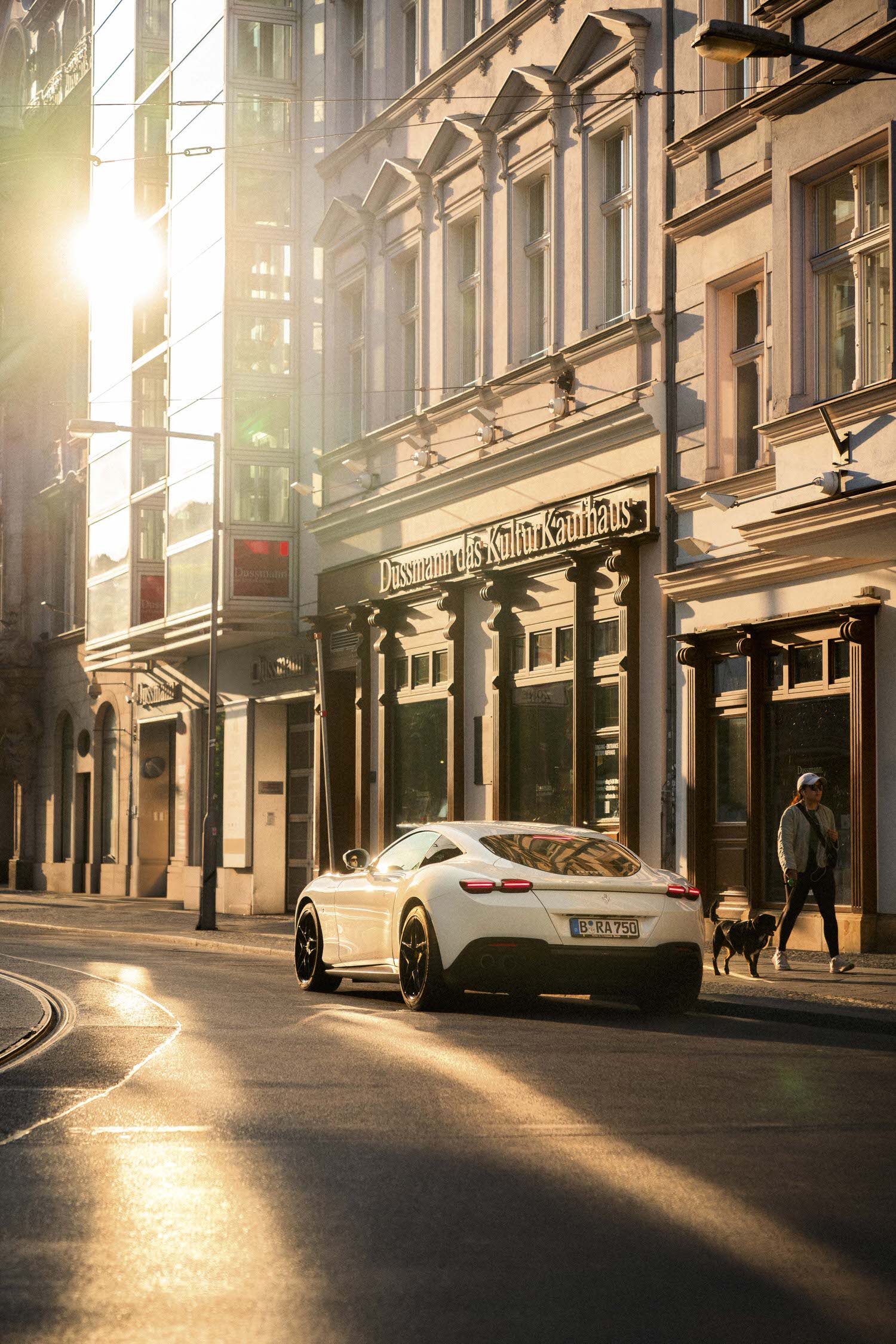
What makes this car particularly provocative is this white, Bianco Cervino, Matterhorn White, which extends to the shark nose and the flared-up arches, making it appear almost -bare-chested, with lowered guard and open visor, as if there were no insects, no splatters of tar, no road chippings, as if the world’s filth could just bounce off it, literally making itself scarce in the face of such pristine beauty, armed with nothing more than the thorny spear of a white rose. And while we’re on the subject of floral bloom: the Spider version can properly unfurl that magic, which is not only -conducive to the sweet melody of elegance but also touches on its historic roots. The Roma Spider is Ferrari’s first front-engine convertible with a soft top since the Ferrari 365 GTS4 from 1969.
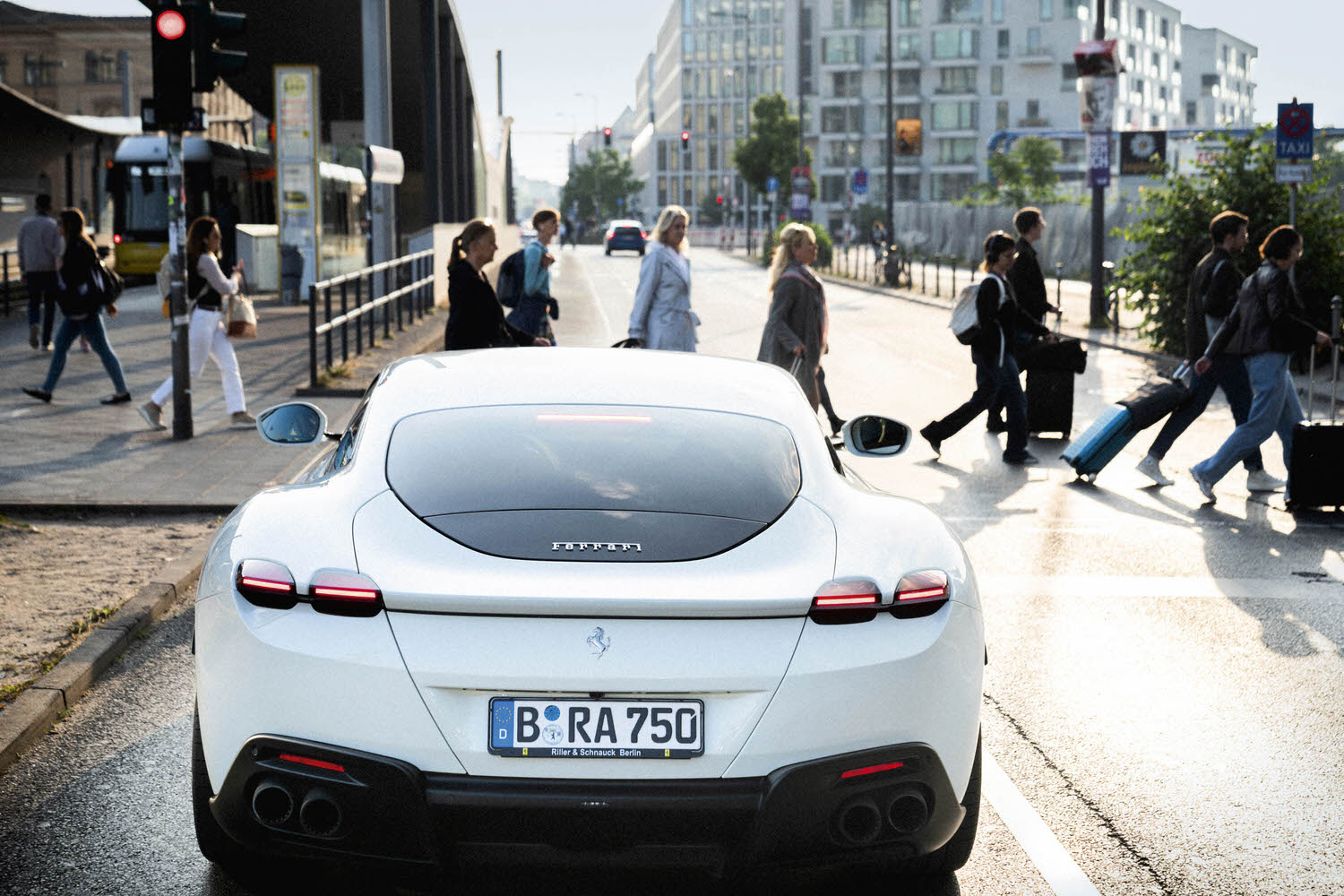
It’s certainly true: Wherever you see a Ferrari, you’re looking at history in motion.
Text: David Staretz
Photos: Matthias Mederer · ramp.pictures
rampstyle #34 – On Any Sunday
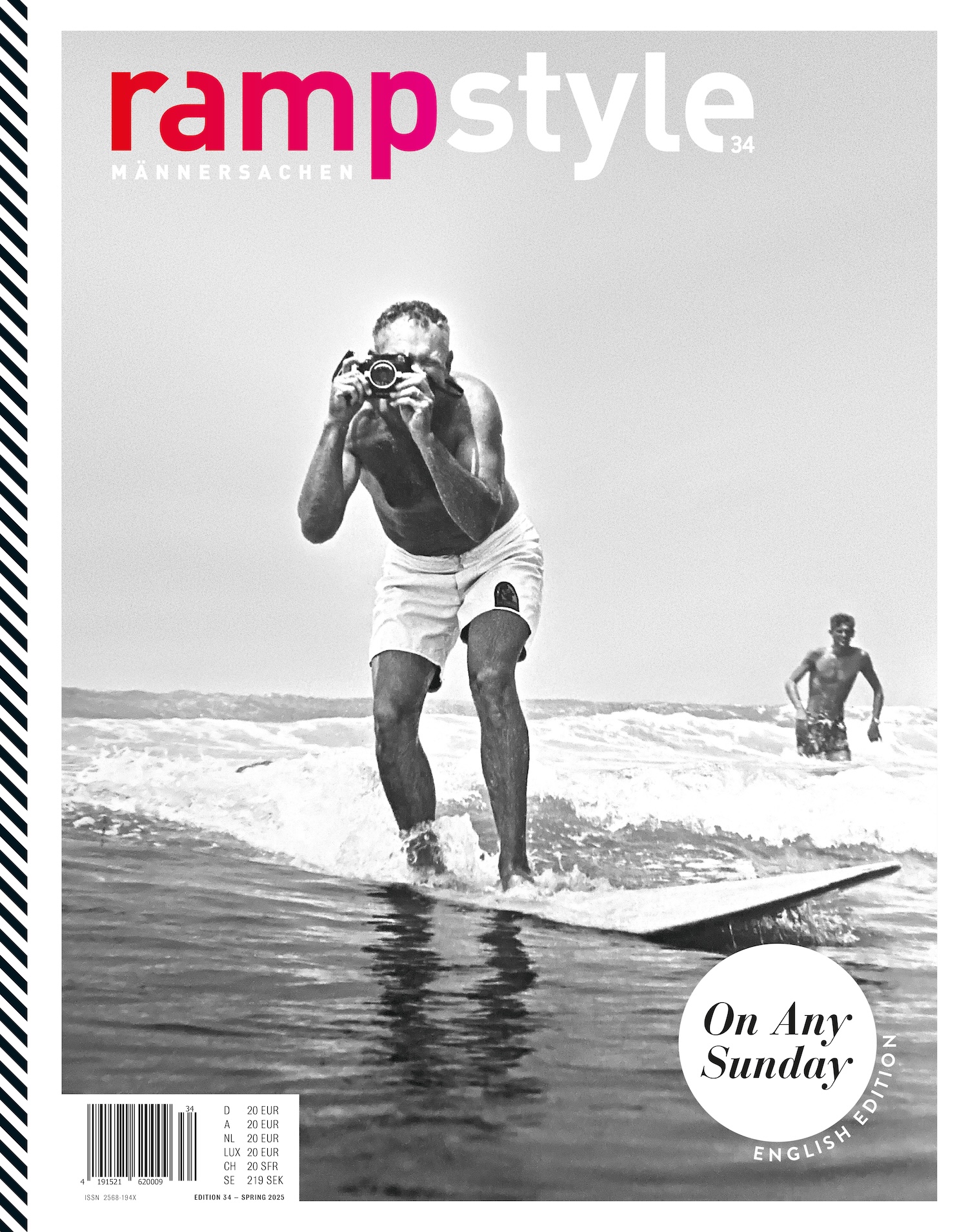
Steve McQueen just wanted to ride a motorcycle in Bruce Brown’s “On Any Sunday”. And that’s exactly what his 1971 classic movie is all about. “On Any Sunday” is more than just a movie – it reminds us that freedom is often just one turn away – and that sometimes all it takes is one thing: the courage to ride. Find out more


